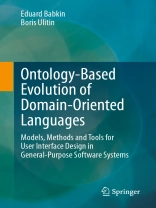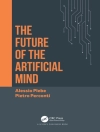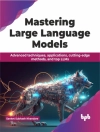This book focuses on the study of ontology-based models and methods used for the implementation of the evolution of external domain-specific languages (DSL), which are mainly intended for modelling the structure of human-machine interfaces. The primary goal of the approach is to increase the efficiency of support processes during the life cycle of general-purpose software systems.
The book is structured in seven chapters. Chapter 1 presents the objectives and significance of the research, as well as a summary of the contents of the work. Chapter 2 analyses the existing classical DSL design and implementation methodology for modelling human-machine interfaces in the context of the lifecycle of general-purpose software systems. Next, chapter 3 is devoted to an analysis of existing methods and formalisms used in describing the structure of a DSL for modelling human-machine interfaces of software systems. Subsequently, chapter 4 provides a detailed description of the proposed new projection-based approach for developing such DSLs. Chapter 5 then describes the software implementation of the human-machine interface evolution based on an example of an external DSL in two domains. Eventually, chapter 6 analyses the application of the proposed projection approach for more complex systems, namely, decision support systems based on heterogeneous information of decision makers. The concluding chapter 7 summarizes the main results of the research and suggests further development paths and practical applications.
The book is written for researchers in model-driven software development in general and in domain-specific language engineering in particular.
Содержание
1. Research Background.- Part I: The Place of a Domain-Specific Language in Modern Information Systems.- 2. Analysis of Existing Approaches to the Development of DSL for Software Systems.- 3. Analysis of Existing Approaches to the Formalization of the DSL structure.- Part II: A Projection Approach to DSL Development.- 4. Developing a Projection Approach to DSL Development.- 5. Practical Use of the Proposed Projection approach for Developing and Modifying DSL in Changing Contexts.- 6. Discussion and Further Development.- 7. Conclusion and Final Remarks.
Об авторе
Eduard Babkin is a tenured professor in the Department of Information Systems and Technologies of the National Research University Higher School of Economics (Nizhny Novgorod, Russia), where he is the head in the Research Laboratory of Theory and Practice of Decision Support Systems (TAPRADESS). Eduard worked in the IT industry for leading software companies, he has more than twenty years of practical experience in architecting and model-based software engineering of complex distributed information systems. In 2007, he obtained his Ph D in Computer Science from the National Institute of Applied Sciences (Rouen, France). Since that time, he has carried out scientific research in enterprise engineering and knowledge management engineering as a principal investigator or a team lead. Currently Eduard is mostly interested in multidisciplinary studies where advances of conceptual modelling, distributed algorithms and multi-agent systems can be applied for relevant problems in decisionsupport, semantic interoperability and software engineering.
Boris Ulitin holds a Ph D in Computer Science and works as an associate professor at the National Research University Higher School of Economics. He holds several copyright certificates in the field of domain-specific languages and adaptive information systems. He is a regular participant in international conferences in the field of business informatics, as well as several ‘strategic projects’ for the digitalization of various types of enterprises.












